
Jaron Zepel Lanier is an American computer scientist, visual artist, computer philosophy writer, technologist, futurist, and composer of contemporary classical music. Considered a founder of the field of virtual reality, Lanier and Thomas G. Zimmerman left Atari in 1985 to found VPL Research, Inc., the first company to sell VR goggles and wired gloves. In the late 1990s, Lanier worked on applications for Internet2, and in the 2000s, he was a visiting scholar at Silicon Graphics and various universities. In 2006 he began to work at Microsoft, and from 2009 has worked at Microsoft Research as an Interdisciplinary Scientist.

Lode Runner is a 2D puzzle-platform game, developed by Doug Smith and published by Broderbund in 1983. Its gameplay mechanics are similar to Space Panic from 1980. The player controls a character who must collect all the gold pieces in a level and get to the end while being chased by a number of enemies. It is one of the first games to include a level editor.

Spy vs. Spy is a video game written by Michael Riedel for the Commodore 64 and published by First Star Software in 1984. A port for the Atari 8-bit family was released simultaneously. It is a two-player, split-screen game, based on Mad magazine's long-running cartoon strip Spy vs. Spy, about the slapstick antics of two spies trying to kill each other with improbably elaborate traps and weapons.
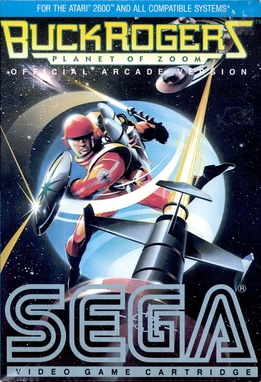
Buck Rogers: Planet of Zoom, known as Zoom 909 in Japan, is a pseudo-3D rail shooter released as an arcade video game by Sega in 1982. The player controls a spaceship in a third-person perspective, adapting the three-dimensional perspective of Sega's earlier racing game Turbo (1981) for the space shoot 'em up genre. It used the Buck Rogers license, referencing the space battles, though Buck himself is never seen.

Paperboy is an arcade action game developed and published by Atari Games, and released in 1985. The player takes the role of a paperboy who delivers a fictional newspaper called The Daily Sun along a street on his bicycle. The arcade version of the game featured bike handlebars as the controller.
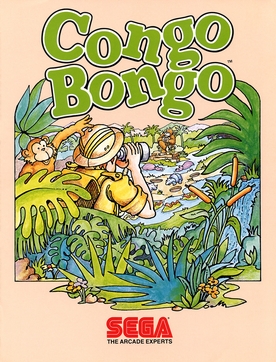
Congo Bongo, also known as Tip Top, is a platform game released as an arcade video game by Sega in 1983. A message in the ROM indicates it was coded at least in part by the company Ikegami Tsushinki. The game is viewed in an isometric perspective, like Sega's earlier Zaxxon (1982), but does not scroll. Numerous home ports followed.
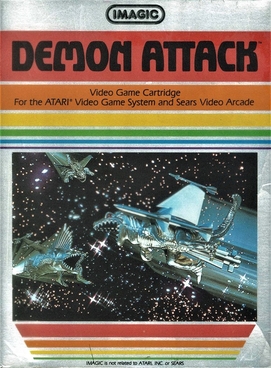
Demon Attack is a fixed shooter video game programmed by Rob Fulop for the Atari 2600 and published by Imagic in 1982. The game involves the player controlling a laser cannon from the surface of a planet, shooting winged demons that fly down and attack the player in different sets of patterns.

One on One: Dr. J vs. Larry Bird, commonly known as One on One, is a basketball video game written by Eric Hammond for the Apple II and published by Electronic Arts in 1983. It was initially ported to the Atari 8-bit family, ColecoVision, Commodore 64, and IBM PC. Versions followed for the TRS-80 Color Computer, Macintosh, Amiga, and ZX Spectrum. In Europe, the publisher was Ariolasoft. Atari Corporation released an Atari 7800 port in 1987.

PaperClip is a word processor for the Commodore 64, 128, and Atari 8-bit family published by Batteries Included in 1985. In the United Kingdom it was published by Ariolasoft.

International Soccer, also known as International Football, is a sports video game written by Andrew Spencer for the Commodore 64 and published by Commodore International in 1983. Originally only available on cartridge, CRL re-released the game on cassette and disc in 1988.

Crossfire is a multidirectional shooter created by Jay Sullivan for the Apple II and published by On-Line Systems in 1981. Using keyboard-based twin-stick shooter controls, the player maneuvers a ship in a grid-like maze. Versions with joystick-control use the stick for movement and switch to firing mode when the button is held down.
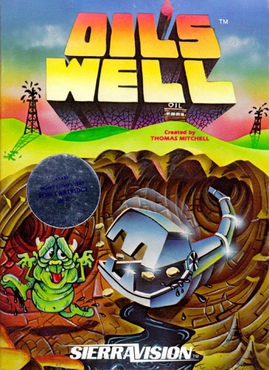
Oil's Well is a video game published by Sierra On-Line in 1983. The game was written for the Atari 8-bit family by Thomas J. Mitchell. Oil's Well is similar to the 1982 arcade game Anteater, re-themed to be about drilling for oil instead of a hungry insectivore. Ports were released in 1983 for the Apple II and Commodore 64, in 1984 for ColecoVision and the IBM PC, then in 1985 for MSX and the Sharp X1. A version with improved visuals and without Mitchell's involvement was released for MS-DOS in 1990.

Beach Head II: The Dictator Strikes Back is a 1985 video game for the Commodore 64, a sequel to Beach Head, developed and published by Access Software. It was designed by Bruce Carver and his brother, Roger, and was released for the Amstrad CPC, Apple II, Atari 8-bit family, Commodore 64, and ZX Spectrum.
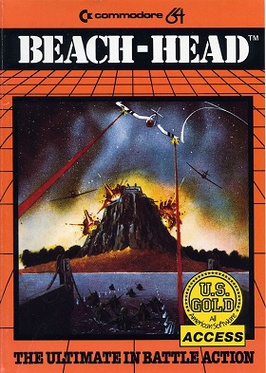
Beach-Head is a video game developed and published in 1983 by Access Software for the Atari 8-bit family and Commodore 64 home computers in the US. Versions for the ZX Spectrum, BBC Micro, and Acorn Electron were published in Europe by U.S. Gold in 1984, followed by versions for the Amstrad CPC, Commodore 16 and Plus/4 in 1985.
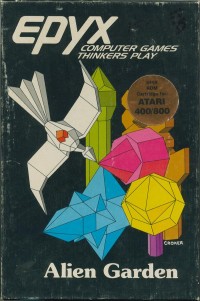
Alien Garden is a non-game for the Atari 8-bit family published by Epyx in 1982 by Bernie De Koven and programmed by virtual reality pioneer Jaron Lanier. Designed with an emphasis on the need for experimentation, Alien Garden was described by its creators as an art game, and ranks among the earliest art games. Its release predates Lanier's Moondust by a year.

Brain Strainers is a music video game released for the Atari 8-bit family and Commodore 64 in 1983 and ColecoVision in 1984. It contains two sub-games, one of which is a clone of the popular 1970s audio game, Simon. It is notable for being one of the earliest music video games to employ pitch-based gameplay in the Clef Climber portion of the game.

On-Court Tennis is a computer game developed by Activision's Gamestar division and published in 1984 for the Commodore 64.
John O'Neill was a British artist and video game designer best known for developing the games Lifespan and The Dolphin's Rune. He is one of the earliest art game designers, and his work has been compared to that of contemporary game designer, Jaron Lanier.
VPL Research was one of the first companies that developed and sold virtual reality products. It was founded by computer scientist Jaron Lanier in 1984. "VPL" stood for "Virtual Programming Languages". In 1990, VPL Research filed for bankruptcy and in 1999 all of its patents were bought by Sun Microsystems.
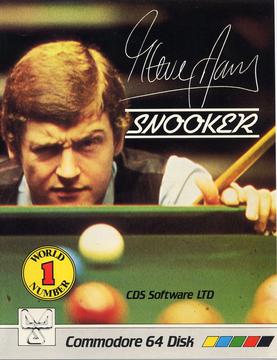
Steve Davis Snooker is a sports simulation video game developed and published by CDS Software in 1984. The budget release published by Blue Ribbon Software reached the top of the UK charts in May 1988. Steve Davis Snooker simulates the cue sport snooker. Released under licence from 6-time Snooker World Champion, Steve Davis.



















